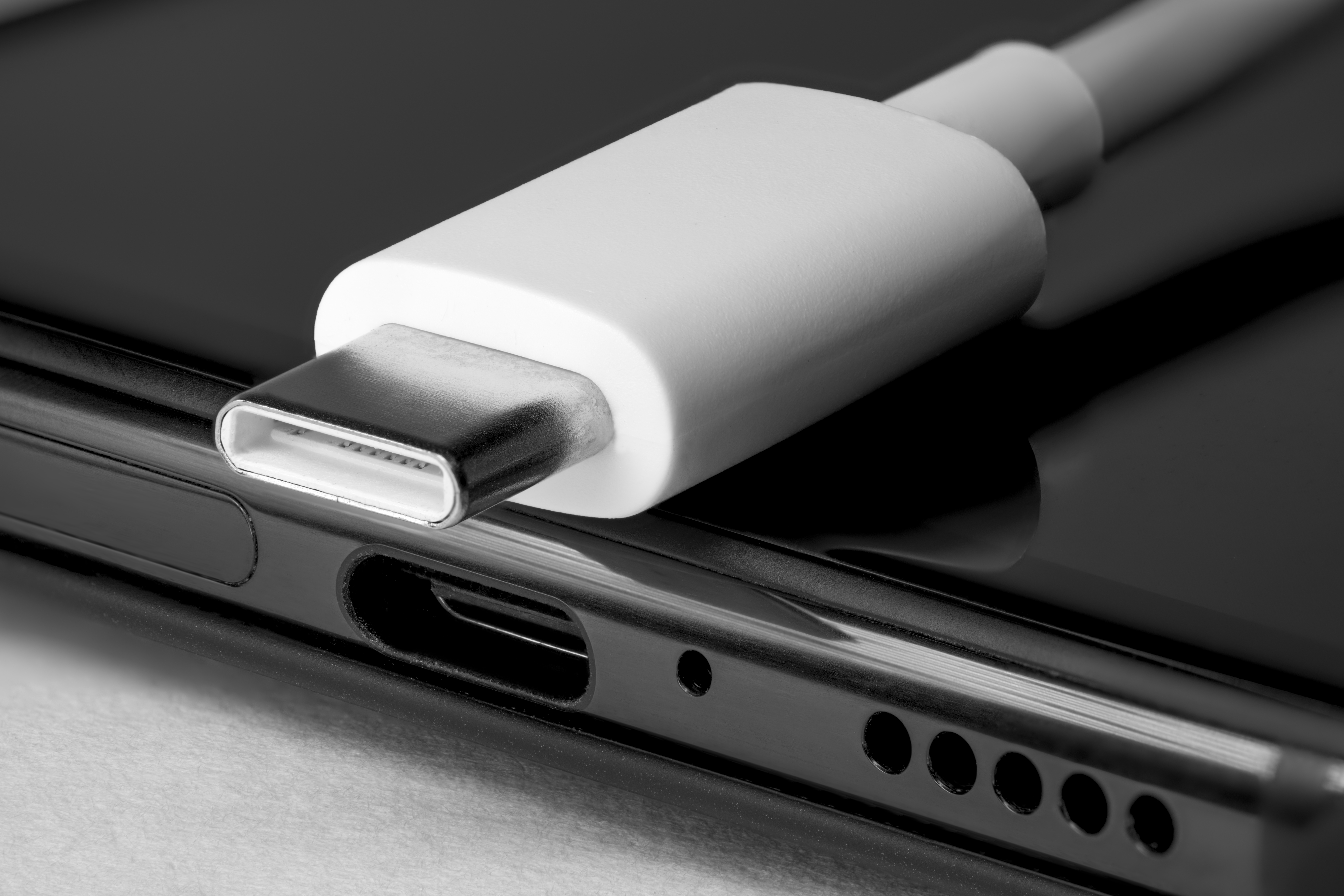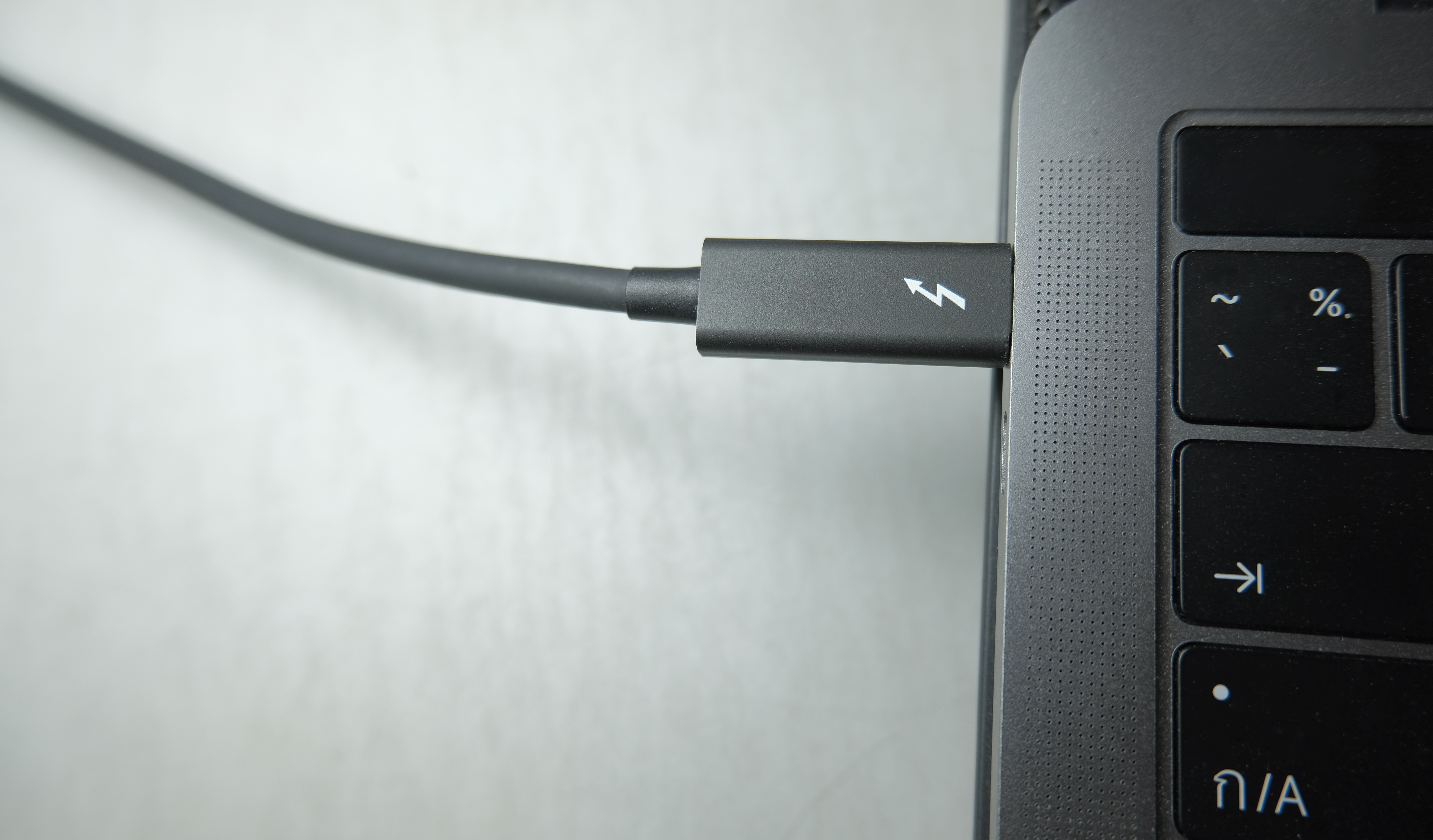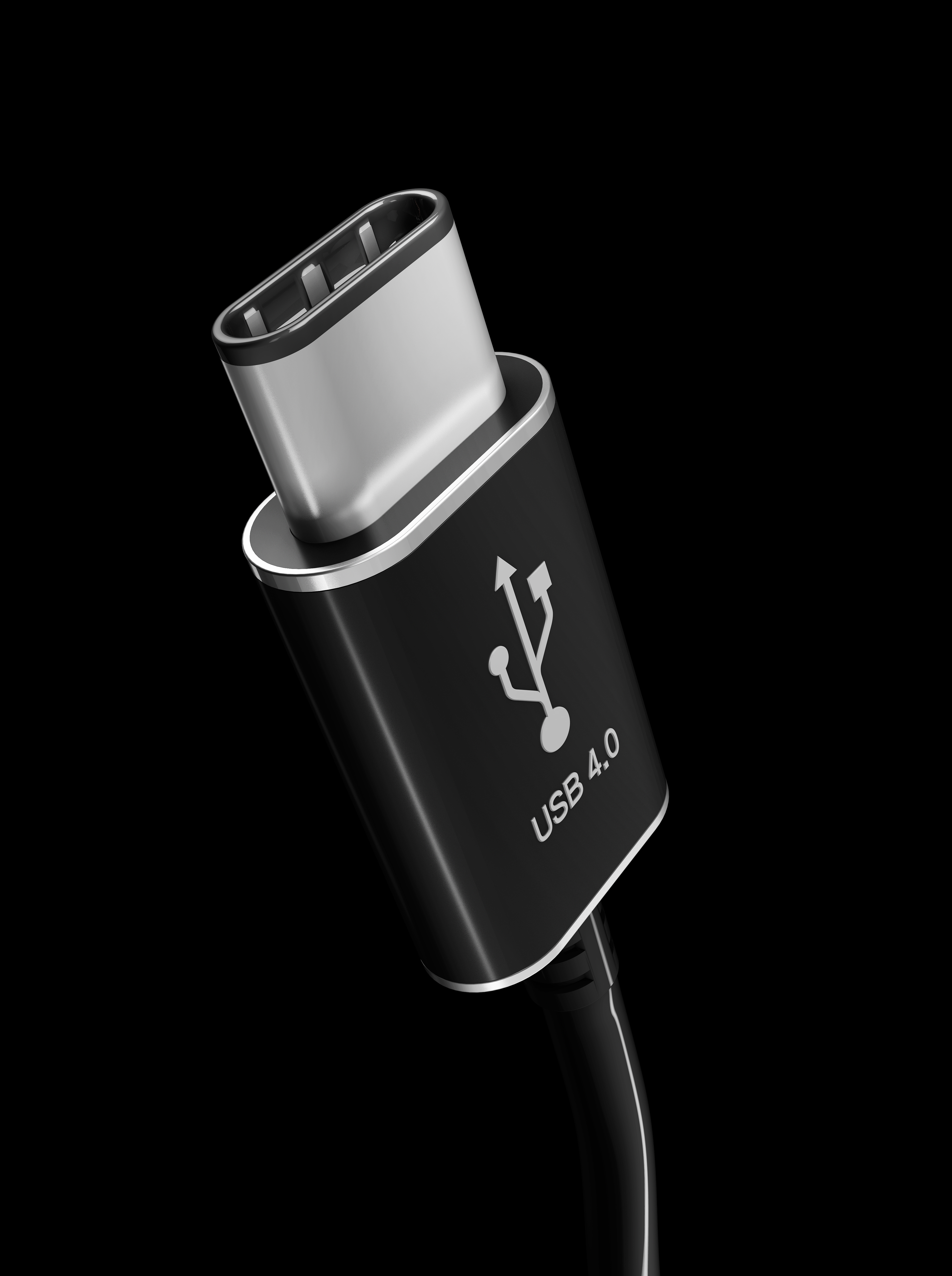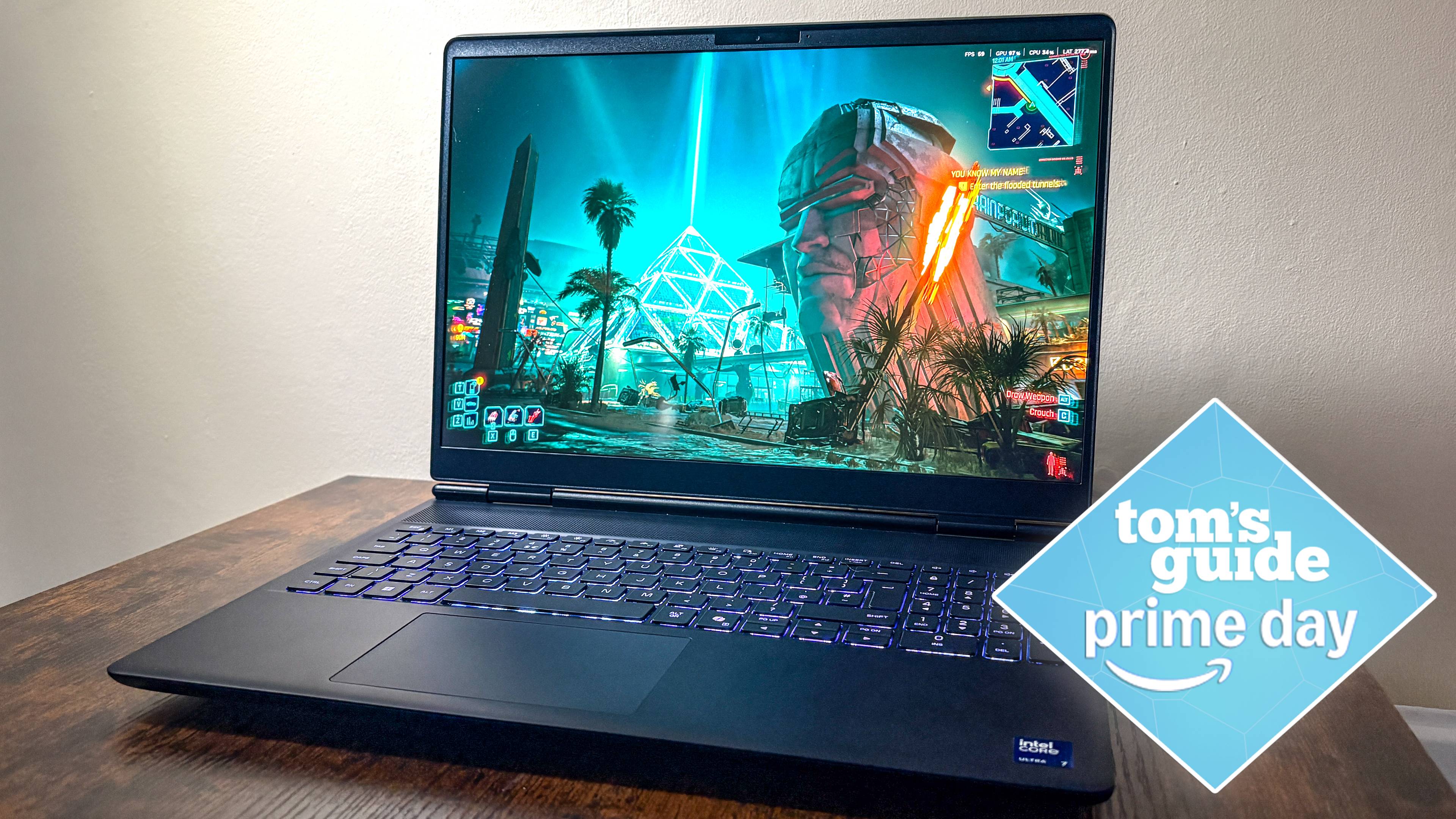Thunderbolt 4 vs USB4: What's the difference?

Thunderbolt 4 and USB4 are quickly becoming the connectivity standard in the best laptops, the best gaming laptops and the best computers. Each has a USB Type-C (USB-C) connector, are capable of up to 40Gbps speeds and support video and power passthrough.
The technologies share so many similarities that it can be difficult to distinguish between the two. This feat isn't as easy as identifying the difference between USB-C vs. USB-A. But the differences between Thunderbolt 4 and USB4 are important.
There’s a lot of technical information to delve into, but we’ve distilled the details as much as possible to help clear up the confusion surrounding these connection types. Though you ultimately can’t go wrong buying devices with either Thunderbolt 4 or USB4 ports, knowing what separates the two will help you make a more informed purchase.
These are the differences between Thunderbolt 4 and USB4.
What is Thunderbolt 4?

Thunderbolt technology was introduced by Intel and Apple and first appeared on the MacBook Pro in 2011. It drove high-resolution displays and high-speed data transfers at 10Gbps (billions of bits per second) by combining DisplayPort and PCI Express tech into one cable. Thunderbolt 2 arrived and doubled the bandwidth and added DisplayPort 1.2 support. It wasn’t long before Thunderbolt 3 made its debut, boasting a bandwidth of up to 40Gbps.
Intel announced Thunderbolt 4 during CES 2020 and released the final specification in July of that year. A single Thunderbolt 4 cable connection is capable of high-speed data transfers powering and charging devices and displaying video to external monitors.
Thunderbolt 4 has a maximum bidirectional bandwidth of 40Gbps and is four times faster than USB 3.2 Gen 1.
Thunderbolt 4 has a maximum bidirectional bandwidth of 40Gbps and is four times faster than USB 3.2 Gen 1. You can also connect up to five Thunderbolt devices to a single PC. Thunderbolt 4 is compatible with PCIe, DisplayPort and USB4 and is backward compatible with older iterations of Thunderbolt via USB-C connection. With a minimum PCIe data requirement of 32Gbps, Thunderbolt 4 delivers better performance and high transfer rates.
Get instant access to breaking news, the hottest reviews, great deals and helpful tips.
Thanks to its high bandwidth capacity, Thunderbolt 4 allows you to connect two 4K 60Hz monitors or a single 8K 60Hz monitor. You can charge many different devices with Thunderbolt 4, including smartphones, tablets and even some laptops. Because of its versatility, you can argue that Thunderbolt 4 is the only connection type one needs.
Thunderbolt 4 allows you to wake your laptop from sleep mode by using an external keyboard or mouse that’s connected via the Thunderbolt 4 port. It also has Direct Memory Access (DMA) protection, which can physically prevent DMA attacks. Thunderbolt 4 does this by creating virtual memory for every connected device by blocking access to system-wide memory.
What is USB4?

Universal Serial Bus, better known as USB, has been around since 1996 and was designed to standardize the connection of peripherals to PCs.
The USB Implementers Forum (USB-IF) released USB4 on August 29, 2019. USB4 is based on the Thunderbolt protocol, and because of that, it also has speeds up to 40Gbps. It’s backward compatible with USB 3.2 and even USB 2.0, though you’ll need an adapter for the USB4 cable since it uses a USB-C connector.
Unlike Thunderbolt 4, USB4 doesn’t have dual monitor support.
USB4 supports DisplayPort 2.0 and is capable of outputting video at 8K and even 16K resolution at 60Hz. But unlike Thunderbolt 4, it doesn’t have dual monitor support. DisplayPort 2.0 can use up to 80 Gbps since it’s only transmitting data in one direction (to the monitor). USB4 is even fast enough to connect an external GPU. It has a power delivery of 100W similar to Thunderbolt 3.
Though USB4 is capable of 40Gbps transfer speeds, some devices only support up to 20Gbps – particularly lower-priced products. You can look for a “20” or a “40” in a device’s spec sheet or box to see which one it supports. And while USB4 is capable of delivering 100W of power, it has a minimum requirement of 7.5W.
Thunderbolt 4 and USB4: Similarities and differences
It’s hard telling Thunderbolt 4 and USB4 apart. Both use a USB-C connector, are capable of 40Gbps speeds, support video passthrough and can power and charge devices. While it’s tempting to think of Thunderbolt 4 and USB4 as basically the same, the two technologies have some distinctive differences. It boils down to minimum requirements.
USB4 devices can have a minimum of 20Gbps link speeds. In comparison, all Thunderbolt 4 devices have a 32Gpbs minimum requirement. UBS4 has a 7.5W minimum power requirement whereas Thunderbolt 4 doubles it with a minimum of 15W. The minimum power and speed requirements are important to keep in mind when purchasing a device. You’ll need to check a device’s specs since manufacturers can choose between 20Gpbs and 40Gbps speeds with USB4. With Thunderbolt 4, you’ll always get a minimum of 32Gbps and 15W.
Thunderbolt 4 cables support 40Gbps speeds over 2 meters. In contrast, UBS4 can only support 40Gbps within one meter and reduces to 20Gbps on cables that are 2 meters or longer. You can tell the difference between Thunderbolt 4 and USB4 cables by their distinct logos. Thunderbolt 4 cables have a lightning bolt with a 4 while USB4 has the iconic USB logo with either a 20 or a 40.
Thunderbolt 4 vs USB4: Which one is better?
Thunderbolt 4 and USB4 share similar specs but the former has higher minimum requirements. While devices with USB4 can have cheaper costs because of the lower requirements, you won’t get all the features available in Thunderbolt 4. So with regard to the Thunderbolt 4 vs USB4 question, it comes down to what you prefer.
If performance is important and price isn’t a factor, then you should look for devices that support Thunderbolt 4. If you’re not worried about high transfer speeds and prefer to buy something more affordable, then you can stick with USB4. Keep in mind that you can still buy USB4 devices with high bandwidth and power delivery; you’ll just need to check a product’s specs to see if that's supported.
Though Thunderbolt 4 is objectively the better connection type due to its expanded features and universality, USB4 is still an improvement over its predecessor. The fact that it’s often easily mistaken for Thunderbolt 4 says a lot. But if you had to choose one connection type over the other, then Thunderbolt 4 is the clear winner.
Next: USB 4 2.0 will provide double the speed even with existing cables.

Tony is a computing writer at Tom’s Guide covering laptops, tablets, Windows, and iOS. During his off-hours, Tony enjoys reading comic books, playing video games, reading speculative fiction novels, and spending too much time on X/Twitter. His non-nerdy pursuits involve attending Hard Rock/Heavy Metal concerts and going to NYC bars with friends and colleagues. His work has appeared in publications such as Laptop Mag, PC Mag, and various independent gaming sites.
